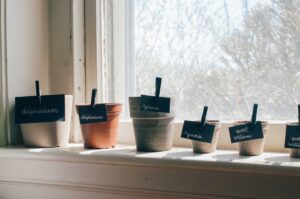
For us gardeners, Spring is without a doubt the most exciting time of the year, so it’s a perfect time to start sowing. But before you tear open that seed packet here is a small guide to sowing to ensure you start off the gardening season the correct way.
Getting Started
You need to be aware of various materials that can help you in your gardening endeavors before you can start to sow. Let’s start with the soil. Regular dirt will do, but choose your mulch wisely for better soil. What is mulch? mulch is almost like a blanket placed over the soil to help lessen water evaporation while accelerating the growth process. Mulch can either be compost, bark or even woodchip. If you are sowing in a flower bed, firstly weed out the soil by hand or with a garden hoe. Fork over the soil to loosen it and remove any lumps or debris.
If you’re sowing in a small area and want to maximize space, then planters are essential. You could even use a box, a tray or any other type of wide container will do. It just has to be large enough to hold enough soil to sow and have enough space for large production.
Overdoing it often overwhelms beginners, so start small with only a few kinds of vegetables you’d like to eat.
Start sowing in a bright area that is ideally shielded from the weather. Put compost in your planters or flower bed. Wet the compost ideally by using a watering can with a fine rose attachment, then let it drain. Although it is impractical to provide every method for every plant, the back of your seed packets should have instructions. If not, spread the seeds thinly and evenly over the top of the compost, spacing them apart by 2 to 3cm. As some seeds are tiny, this can be impossible. Spread the compost evenly over the seeds.
To keep track of what and when you’ve sowed, write out a plant label and place it in the soil.

 Looking After Your Seeds
Looking After Your Seeds
The seedlings can be extremely delicate in their first few months before becoming solid and well-rooted, seedlings require frequent care. Make sure that they are shielded from pests and harsh frosts, They don’t run out of water & are not outcompeted by weeds. Typically, seedlings develop in a matter of weeks; check the seed packet for precise timeframes.
- Always keep the compost a little damp – Be very careful to not overwater.
- Weed – Weed every couple of weeks. This is very important to keep on top of.
- Protect from the frost – Create a small frost guard out of plastic to cover your seeds, remove it once the frost has cleared.
- Keep slugs and snails away – Keep slugs & snails away by putting down repellent around the soil.
- Thin out – Most seedlings need thinned out after a month. Overcrowding can hinder their growth.
Best Time To Sow Vegetables
For more accurate planting months for a given plant, please refer to the seed packet. Also keep in mind that sowing can start sooner in milder places whilst you may require starting later in colder places.
- Beets (Spring)
- Lettuce (Autumn and Winter)
- Carrots (Spring)
- Potatoes (Spring)
- Cauliflower (Autumn and Winter)
- Tomatoes (Summer and Spring)
- Peppers (Summer)
- Broccoli (Autumn and Winter)
- Peas (Autumn)
Now that you have the knowledge and the information get on those gardening gloves and get growing!
Keep an eye out on our Facebook for more get growing tips and information

 Looking After Your Seeds
Looking After Your Seeds




